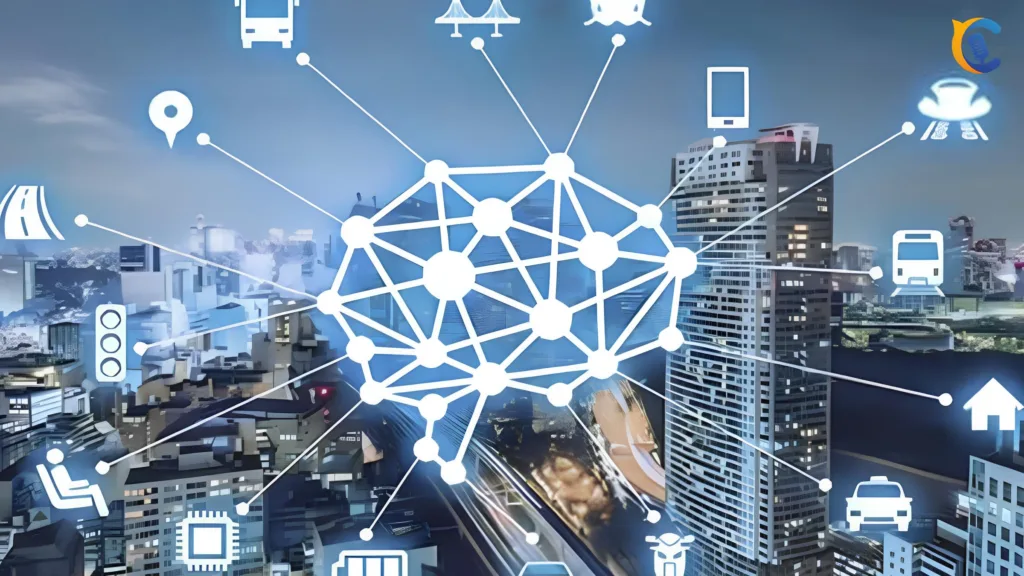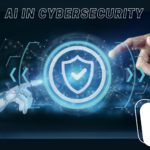The Intersection of AI and Smart Cities in 2023
Table of Contents
Introduction

The Intersection of AI and Smart Cities: In an era marked by unprecedented technological advancements, the concept of “smart cities” has emerged as a promising solution to the challenges posed by rapid urbanization. As populations continue to swell, cities around the world are turning to artificial intelligence (AI) to create more efficient, sustainable, and livable urban environments. This fusion of AI and smart cities is revolutionising how cities operate, enabling them to harness the power of data and automation to enhance various aspects of urban life. In this blog, we will delve into the exciting realm of AI and its transformative impact on the development of smart cities.
The Intersection of AI and Smart Cities:

Smart cities are urban environments that leverage cutting-edge technologies to optimise the use of resources, enhance public services, and improve the overall quality of life for their residents. These cities utilise data-driven insights to make informed decisions, address urban challenges, and provide seamless connectivity and convenience to citizens. From energy management and transportation to healthcare and public safety, the possibilities presented by smart cities are boundless.
AI’s Role in Shaping Smart Cities

Artificial intelligence serves as the backbone of smart cities, enabling them to analyse and interpret vast amounts of data collected from sensors, devices, and various other sources. This data-driven approach empowers city administrators and planners to make real-time decisions, predict trends, and implement efficient strategies. Here are some key areas where AI is making a significant impact on smart cities:
- Urban Planning and Development: AI algorithms help optimise land use, plan transportation networks, and design infrastructure projects. By simulating different scenarios and analysing historical data, urban planners can make informed choices that lead to more sustainable and functional urban layouts.
- Traffic Management: AI-powered traffic management systems monitor real-time traffic patterns and adjust signal timings accordingly. This not only reduces congestion and travel time for commuters but also contributes to reduced carbon emissions and fuel consumption.
- Energy Efficiency: AI-driven energy management systems optimise energy consumption in buildings, street lighting, and other facilities. By analysing usage patterns and adjusting energy distribution based on demand, cities can achieve substantial energy savings.
- Waste Management: AI-enabled waste management systems can predict fill levels in waste bins, optimise collection routes, and reduce operational costs. This results in cleaner streets, reduced truck emissions, and more efficient waste disposal processes.
- Public Safety: AI assists law enforcement agencies in analysing crime patterns and predicting potential incidents. Video analytics and facial recognition technologies enhance surveillance and enable rapid response to emergencies.
- Healthcare Services: Smart cities use AI to monitor public health trends, manage healthcare resources, and improve patient care. Telemedicine and remote health monitoring enable timely interventions and better healthcare access.
- Governance and Citizen Engagement: Chatbots and AI-driven interfaces facilitate efficient communication between citizens and government agencies. Citizens can access information, register complaints, and participate in decision-making processes more conveniently.
Challenges and Considerations

While the integration of AI in smart cities holds immense promise, there are several challenges and considerations that need to be addressed:
- Privacy and Data Security: The extensive collection and analysis of data raises concerns about individual privacy and data security. Striking a balance between data utilisation and safeguarding citizens’ rights is crucial.
- Digital Inclusion: Ensuring that AI-powered services are accessible to all citizens, including those with limited digital literacy or physical disabilities, is essential for the equitable development of smart cities.
- Ethical AI: The responsible deployment of AI requires ethical considerations to prevent bias, discrimination, and unintended consequences. Transparent and accountable AI systems are vital for building trust within communities.
- Infrastructure Readiness: Developing the necessary technological infrastructure, including high-speed connectivity and data storage capabilities, is essential for the effective implementation of AI-driven smart city solutions.
The Intersection of AI and Smart Cities: Key Facts
As the world embarks on its journey towards AI-powered smart cities, several key steps and strategies are crucial for successfully navigating this transformative evolution.
- Collaborative Ecosystems: The development of smart cities requires a collaborative ecosystem where governments, technology companies, academia, and citizens work together. Public-private partnerships foster innovation, resource-sharing, and the co-creation of solutions tailored to each city’s unique needs.
- Data Governance and Standards: Establishing clear data governance frameworks and standards is imperative to ensure responsible and ethical use of data. Open data initiatives, data-sharing protocols, and privacy regulations must be in place to protect citizens’ rights while enabling innovation.
- Education and Digital Literacy: Promoting digital literacy and providing training programmes for citizens will empower them to effectively engage with AI-driven smart city services. Education campaigns can bridge the digital divide and ensure that everyone benefits from the advancements.
- Testbeds and Pilots: Cities can implement AI technologies through small-scale testbeds and pilot projects. These initiatives allow for experimentation, fine-tuning, and validation of concepts before full-scale deployment, minimising risks and maximising benefits.
- Sustainability and Resilience: Smart cities must prioritise sustainability and resilience. AI can help optimise resource allocation, monitor environmental conditions, and respond swiftly to natural disasters, contributing to a greener and safer urban environment.
- Adaptive Regulations: Regulatory frameworks need to be agile and adaptive to keep pace with the rapidly evolving technology landscape. Flexible regulations encourage innovation while safeguarding against potential negative impacts.
- Public Participation: Engaging citizens in the decision-making process fosters a sense of ownership and inclusion. Town hall meetings, online platforms, and participatory budgeting initiatives enable residents to voice their opinions and contribute to the shaping of smart city strategies.
- Global Knowledge Exchange: Collaboration between cities globally enables the exchange of best practises, lessons learned, and innovative ideas. Learning from successful implementations in other cities can accelerate the development of AI-driven smart city solutions.
Conclusion
The Intersection of AI and Smart Cities: The fusion of AI and smart cities represents a paradigm shift in urban development, ushering in an era of unprecedented efficiency, sustainability, and quality of life. As technology continues to advance, the potential for AI-powered smart cities to address urban challenges and enhance citizen well-being is vast.
However, the journey is not without its complexities. Striking the right balance between technological innovation, ethical considerations, and societal impact is paramount. With careful planning, robust governance, and a commitment to inclusivity, cities can unlock the true potential of AI to create smarter, more connected, and more livable urban environments.
As we move forward into this era of transformation, it is crucial to remain vigilant in our pursuit of a future where AI and smart cities coexist harmoniously, benefiting all members of society. By embracing the opportunities and challenges presented by AI-powered smart cities, we have the chance to reshape the urban landscape for generations to come and build a more sustainable, equitable, and prosperous future.
- Arsenal team formation 2023: A Comprehensive Overview 2023
- Greece’s Epic Fight Against Devastating Wildfires
- NASA Shares First Images of US Pollution
- AIRCRAFT CRASHES IN AUSTRALIA’S NORTHERN TERRITORY DURING US MILITARY TRAINING EXERCISE
- Further Insights into the Top 20 US Cities with Highest Internet Usage


































